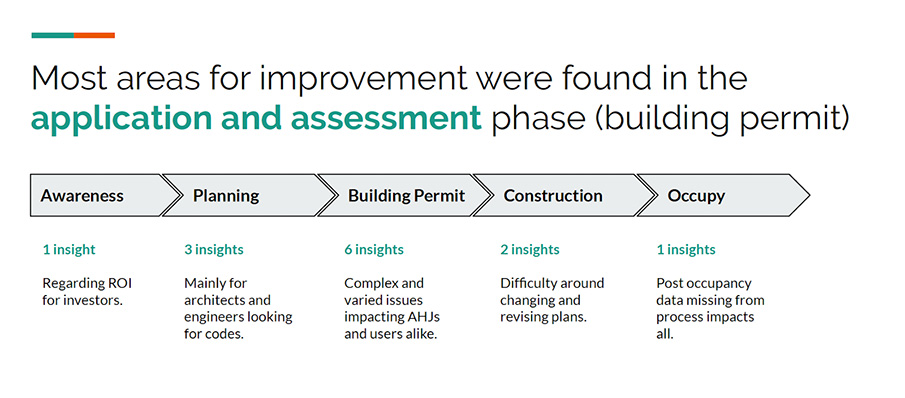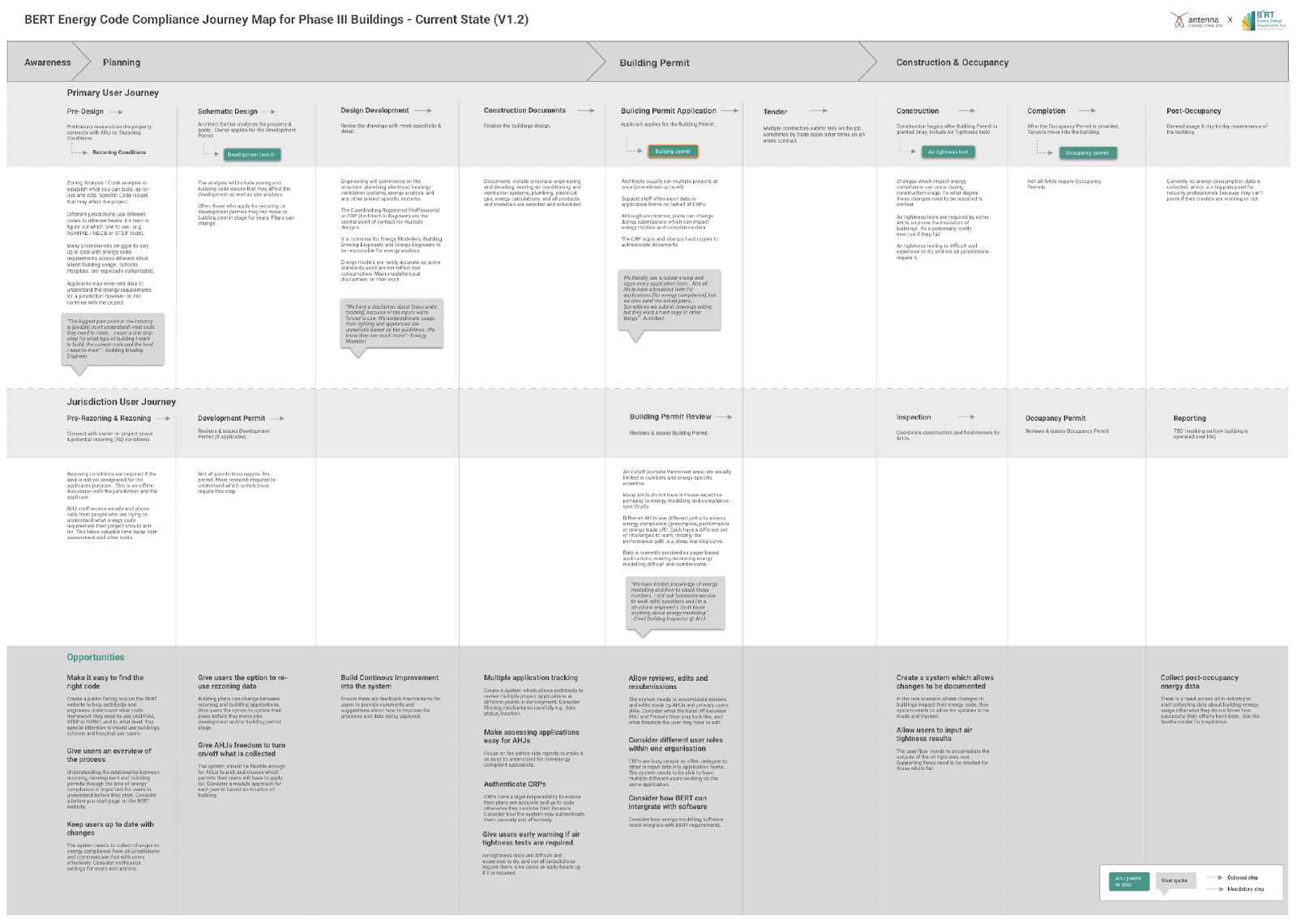Antenna translates requirements to design user-centred prototype for building professionals
In late 2019, the British Columbia Ministry of Municipal Affairs and Housing engaged Antenna to translate requirements to design a prototype for a new Building Energy Requirements Tool (BeRT). BeRT was envisioned as a tool that building professionals could use to measure their compliance with energy usage requirements for large building projects throughout the province. Antenna’s work enabled the Ministry to develop a tool that helps professionals more easily design and comply with provincial energy building code, which jurisdictions can also use to support compliance reviews.
CHALLENGE
Identifying the target users for BeRT, and understanding their needs and their processes was the primary challenge for this project. Discussions with subject matter experts (SMEs) and user research were essential to uncovering the information needed to design the tool.
Understanding the pain points in the current process and ways that BeRT might improve the user experience was also important. What methods were building professionals using to demonstrate code requirements and energy efficiency goals? What information would be beneficial during the process, and at which points? How can we leverage existing tools that building professionals use to share energy requirements?
APPROACH
Early in the project, we understood that close collaboration with external SMEs would be essential in order for our team and the project to be successful. We worked closely with the SMEs in order to understand the complex processes involved in energy compliance.
We began with a thorough discovery and analysis phase. We interviewed dozens of professionals, including building designers, inspectors, and representatives from the Office of Housing and Construction Standards and the City of Vancouver. By auditing jurisdictions and organizations with established energy modelling practices, we identified best practice strategies, tactics, and best practices.

We then reported our findings back to the larger project team, along with recommendations for design. A user journey map based on our findings summarized our insights in a single large poster and a PDF that the team could easily view and parse.

During the design and build phase of the project, we sought regular and frequent user input to check our design assumptions and ensure the project’s success at launch.
SOLUTION
A comprehensive UX research phase provided essential insights to focus our work in design. Through stakeholder interviews and audits of similar products, we uncovered design requirements and opportunities.
Based on these insights, and in close consultation with SMEs, Antenna created a comprehensive conceptual prototype that accommodated the requirements of every jurisdiction in the province. It also accounted for future compliance guidelines that will be available when BeRT is released.
We then tested two variations of the prototype (Vancouver and Burnaby) with 26 users, including building professionals, industry stakeholders, and jurisdictional representatives. We used their feedback to evolve and improve it. Our final deliverable was an updated prototype, which included annotations and recommendations for the future build phase.
RESULTS